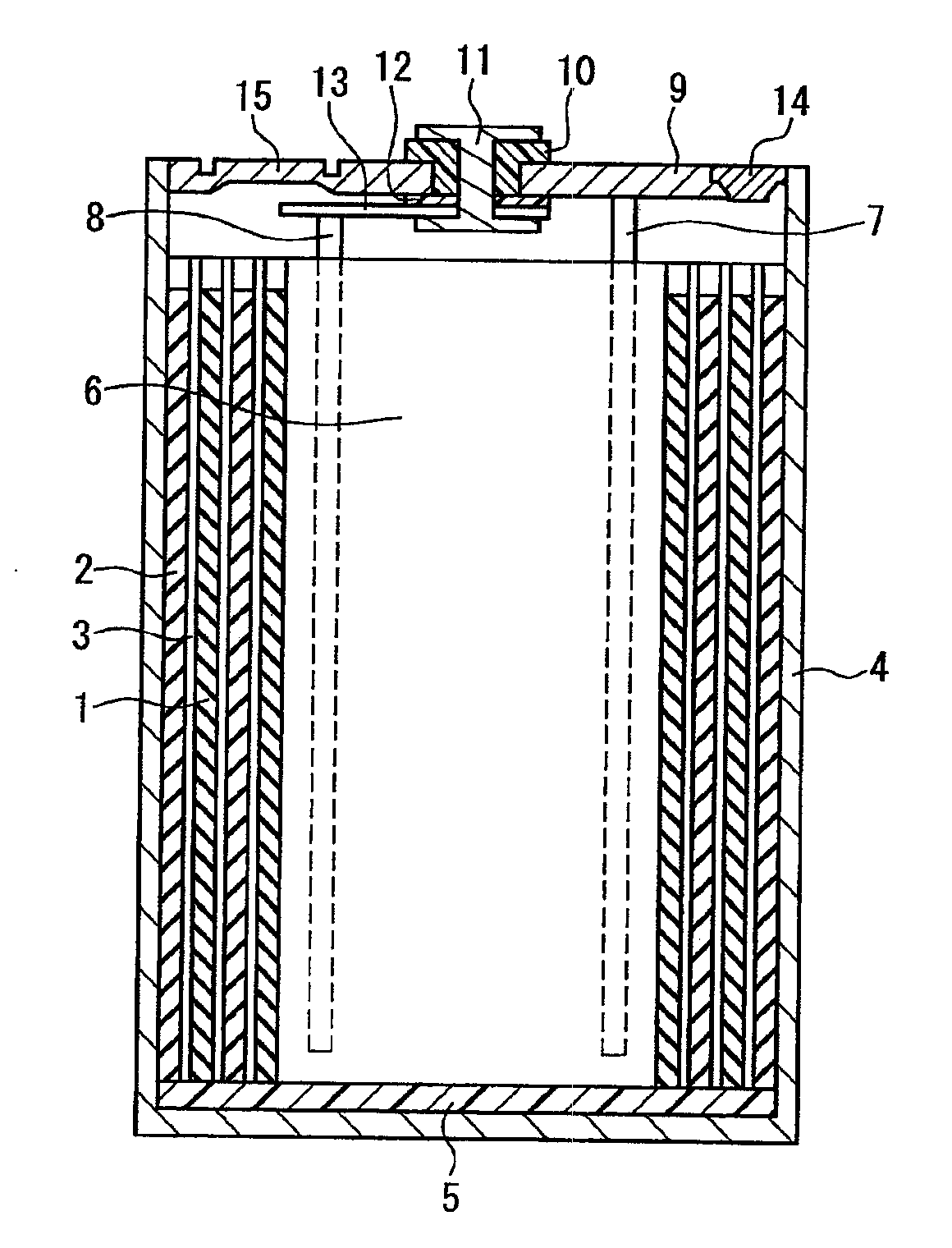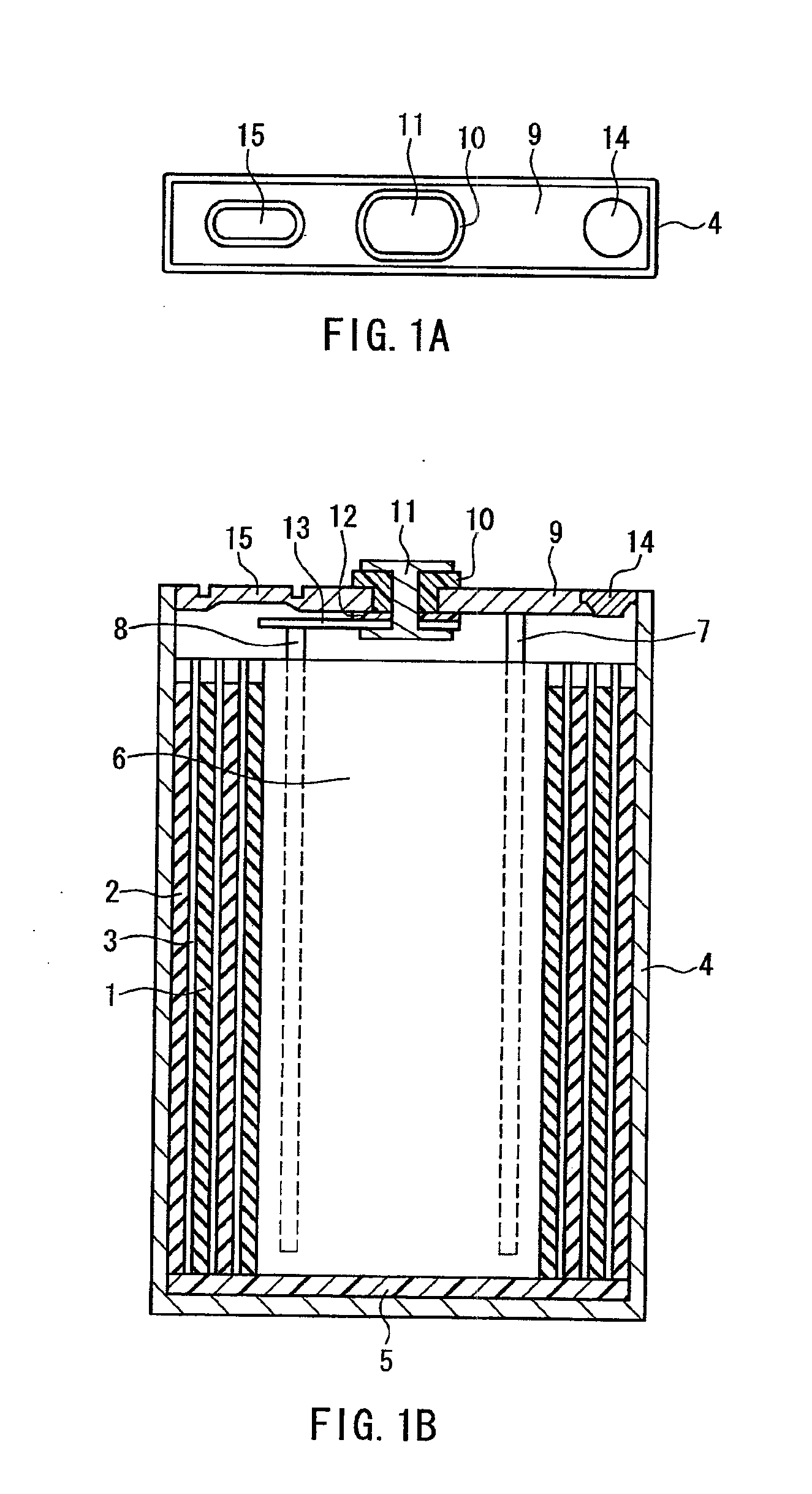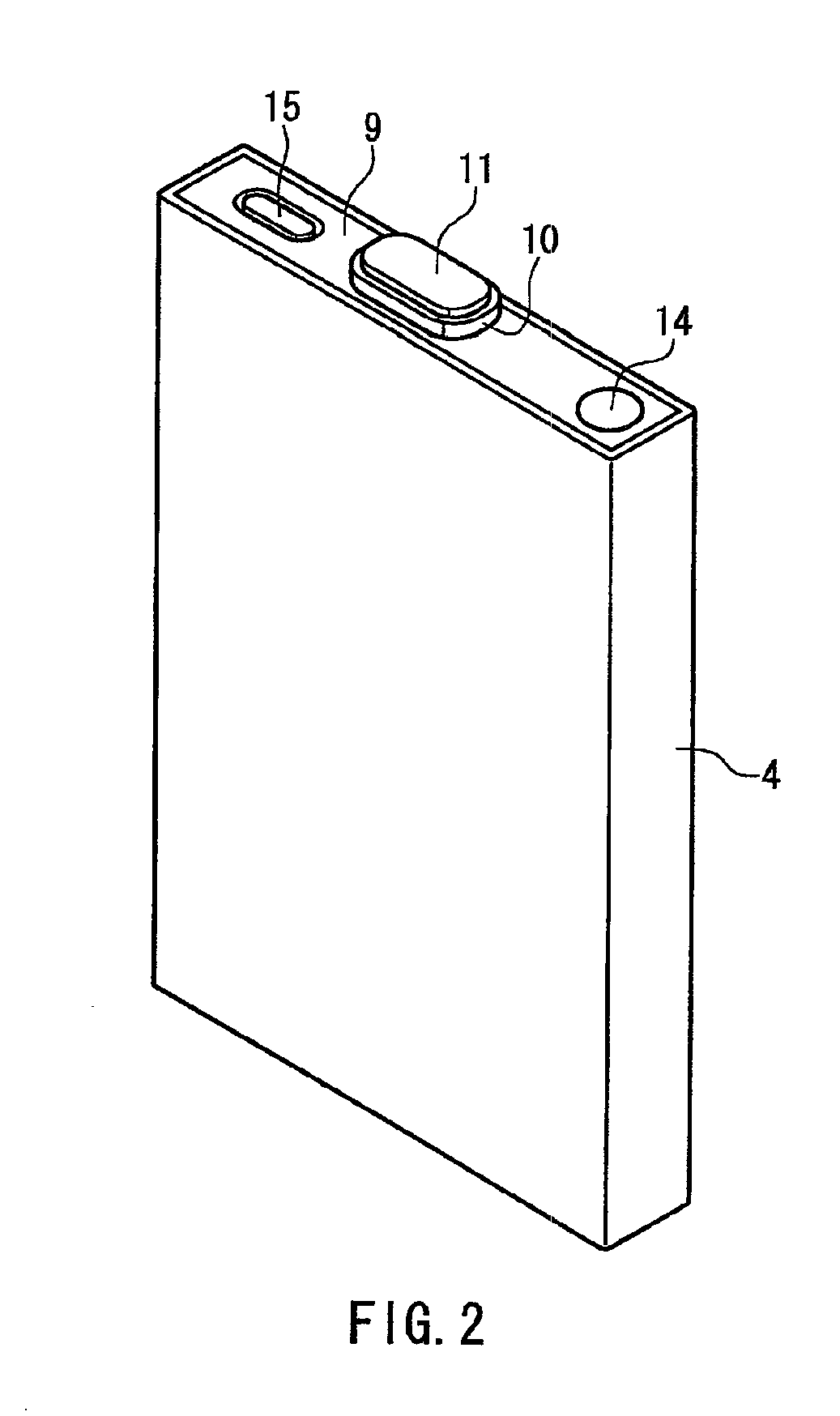Electrochemical device
a technology of electrochemical devices and electrodes, which is applied in the direction of electrochemical generators, cell components, cell component details, etc., can solve the problems of film distorted by drawing, difficult to say that the safety margin of the battery is sufficient, and may shrink, etc., and achieve excellent high-temperature storage and excellent safety. , the effect of excellent safety
- Summary
- Abstract
- Description
- Claims
- Application Information
AI Technical Summary
Benefits of technology
Problems solved by technology
Method used
Image
Examples
example 1
[0139]A water-based negative electrode mixture containing paste was prepared as follows. 98 parts by mass of a mixture (negative electrode active materials) prepared by mixing graphite having an average particle size D50 of 18 μm, d002 of 0.338 nm, an R value of 0.18 and a specific surface area of 3.2 m2 / g with graphite having an average particle size D50 of 16 μm, d002 of 0.336 nm, and an R value of 0.05 at a mass ratio of 85:15, 1.0 part by mass of an aqueous solution whose viscosity was adjusted in the range of 1500 to 5000 mPa·s and containing carboxymethyl cellulose at a concentration of 1 mass %, and 1.0 part by mass of styrene-butadiene rubber were mixed with each other in ion-exchange water having a specific conductance of 2.0×105 Ω / cm or more as a solvent.
[0140]The negative electrode mixture containing paste was intermittently applied to both surfaces of a current collector composed of a copper foil and having a thickness of 10 μm, which then was dried and calendered to adj...
example 2
[0150]A separator was produced in the same manner as in Example 1 by forming the porous layer (II) on a PE microporous film (porous layer (I)). The only exception was that the gap of the micro gravure coater was adjusted so that the porous layer (II) after being dried would have a thickness of 4.3 μm.
[0151]The mass per unit area of the porous layer (II) of the obtained separator was 6.0 g / m2. Further, the piercing strength of the porous layer (II) of this separator was 3.9 N, the content of the plate-like boehmite in volume was 86 vol %, and the porosity of the porous layer (II) was 55%. Moreover, the pore size (bubble point pore size) of the separator measured by the method as described above was 0.033 μm. Further, the number of the plate-like boehmite particles stacked in the porous layer (II) was 12 to 16.
[0152]A lithium secondary battery was produced in the same manner as in Example 1 except that the above separator was used.
example 3
[0153]A separator was produced in the same manner as in Example 1 by forming the porous layer (II) on a PE microporous film (porous layer (I)). The only exception was that the gap and pump discharge of the micro gravure coater was adjusted so that the porous layer (II) after being dried would have a thickness of 7.5 μm.
[0154]The mass per unit area of the porous layer (II) of the obtained separator was 9.8 g / m2. Further, the piercing strength of the porous layer (II) of this separator was 4.0 N, the content of the plate-like boehmite in volume was 88 vol %, and the porosity of the porous layer (II) was 53%. Moreover, the pore size (bubble point pore size) of the separator measured by the method as described above was 0.033 μm. Further, the number of the plate-like boehmite particles stacked in the porous layer (II) was 22 to 28.
[0155]A lithium secondary battery was produced in the same manner as in Example 1 except that the above separator was used.
PUM
 Login to View More
Login to View More Abstract
Description
Claims
Application Information
 Login to View More
Login to View More - R&D
- Intellectual Property
- Life Sciences
- Materials
- Tech Scout
- Unparalleled Data Quality
- Higher Quality Content
- 60% Fewer Hallucinations
Browse by: Latest US Patents, China's latest patents, Technical Efficacy Thesaurus, Application Domain, Technology Topic, Popular Technical Reports.
© 2025 PatSnap. All rights reserved.Legal|Privacy policy|Modern Slavery Act Transparency Statement|Sitemap|About US| Contact US: help@patsnap.com



